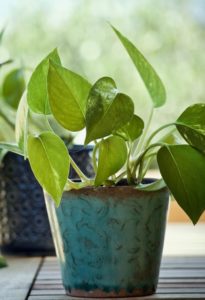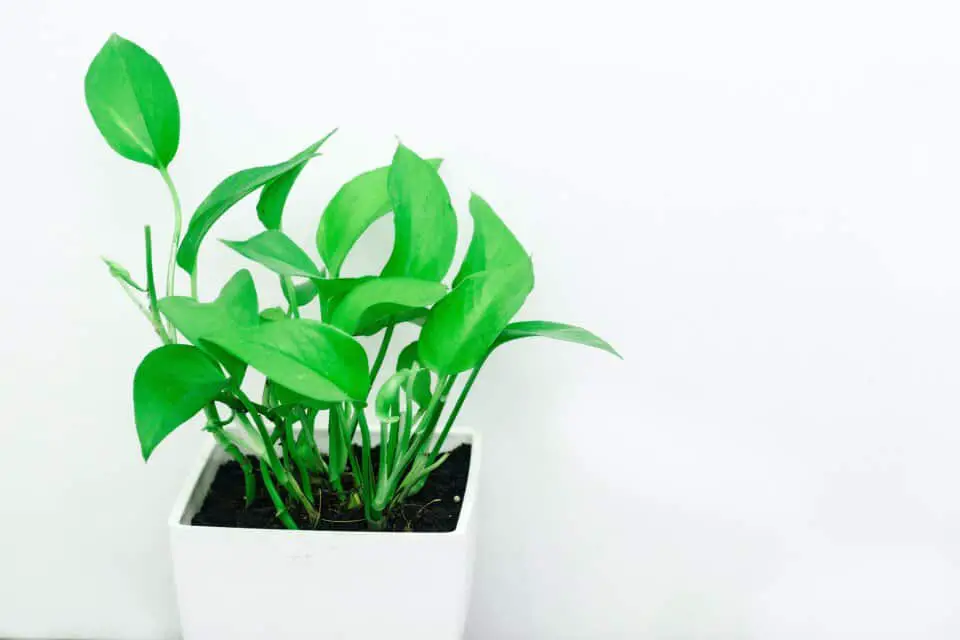Some links in the post are affiliate links and I get a commission from purchases made through some links found in the post.
Pothos is a tropical plant that comes with gorgeous foliage and is a perfect decor for any home and office. People love it, not only because of its beauty but also because of its low-maintenance nature.
This plant does not require much and will thrive in your home if you give it love and care. One of the questions that pothos owners most of the time have are whether to have your pothos misted?
Pothos is native to the tropical environment, therefore, the plant adores warm and humid climates. Since you came here, you must be wondering if you must have the pothos misted.
Since humidity is one of the main factors in the growth of such plants, some people think that giving them additional moisture will be beneficial.
However, it is not the case. Pothos does not require misting and especially if it is done improperly, it can hugely harm your plant.
Having the right humidity level for the pothos plant is important, however, if you have misted your pothos incorrectly, it can lead to a bunch of problems.
So, what can you do in this case? No worries, in this article we will explain how to care for the pothos plant and how to maintain the proper living environment for it.
Do Pothos Like to be Misted?
Pothos does not really like to be misted. Even though the misting raises the humidity level, it is for only a short amount of time.
After the water dries, it returns to its old environment and therefore, is not beneficial for the plant. Additionally, the misting can increase the risk of fungus disease and infestations.
Should you Mist a Pothos?
 You can give some misting to your pothos plant once in a while. However, if you live in an area that has an arid climate, then the misting will not do any work.
You can give some misting to your pothos plant once in a while. However, if you live in an area that has an arid climate, then the misting will not do any work.
Even more, if the humidity level in your area is more than 60% and the circulation of air in your home is not good, then all those stuff can lead to damaged foliage problems.
This happens because the water stays in the foliage and does not move.
The positive side of having pothos misted is that first of all, it creates humidity.
The misting helps foliage and leaves by cleaning them and if you mix it with the correct liquid such as a mix of neem oil, you will prevent the plant from pests and infestation.
However, people who state that the pothos misted is not good state that the humidity that is created by misting lasts only for a few minutes and therefore, is not any significant help.
Also the misting can cause diseases and infestation and finally, it can lead to damaged leaves.
Do Pothos like Humidity?
Pothos is a tropical plant, therefore it loves high humidity and the correct level is crucial for the plant’s development and growth.
What can be a way out of the situation? one of the most viable solutions is the use of humidifiers or moss pole. The perfect humidity level for the pothos plant is above 50%.
The stomata of plants are located beneath the leaf surface. It is like the tiniest holes that “breath” the air. This is how photosynthesis is happening. By the Stomata, they exchange the air and gasses from the environment.
If the humidity level is lower than the plant requires, then the plant will not be able to open those tiny holes and therefore, it will result in the loss of a lot of water.
How To Increase Humidity Level At Home
We all agree that having pothos misted is not the best option and it can cause a bunch of problems regarding pests and infestation.
However, there are some other ways that will help you to increase the humidity level without putting your plant at risk.
One of the first methods is the creation of a mini greenhouse. A mini greenhouse is a box that is made with either plastic or glass. The box helps the plant retain moisture. Mini greenhouses are like a terrarium and work like them.
Adding the small aquarium in the room will help to maintain the higher humidity level. Aquarium has natural evaporation and slowly, but effectively increases the humidity level around the house.
Another method that people often use for raising the humidity level is putting a bunch of plants together.
By grouping them, the plants will transpire and release the moisture around them. This can be beneficial for every individual plant and for a group.
Additionally, one of the most practiced and easiest methods is the use of a humidifier. The good quality humidifier is really worth it.
Humidifiers are pretty affordable, come in various sizes, and will help you to maintain the moisture level that you want. That can be effective if you live in an area with a humidity level that is below 50%.
Your pothos plant can benefit if you place a moss pole in the room. A moss pole is a good way to maintain a good amount of moisture at home. It will also help to develop and grow aerial roots and benefit the growth.
How to Check the Humidity in your Home
The most accurate humidity measurement is done by a hygrometer. This is a device that relatively measures humidity levels in the air.
Before actually measuring the humidity, remember that in some parts of the house it will be higher than in others.
For example, the humidity level in the kitchen, bathroom, and basement will be higher in comparison to the living room and bedroom.
If you do not want to pay money for measuring the humidity level, there is another option too that is known as the ice cube method.
This method does not give you exact measurements but it will give you a general idea of your indoor moisture level.
To measure the humidity with the ice cube method, you will need a glass of water and several ice cubes. Fill the glass with water and put two or three ice cubes in it. leave it for a few minutes.
After checking, if you see condensation forming outside the glass, then it means that the humidity level is too low. For this experiment, make sure to choose a stable place where the humidity level is not changing quickly.
What are the Signs your Pothos needs Humidity?
 There are several signs that your pothos needs more humidity, one of those signs is when the foliage edges turn brown.
There are several signs that your pothos needs more humidity, one of those signs is when the foliage edges turn brown.
Also, in most cases, when the humidity is too low the leaves become droopy and the pothos plant starts to wilt. However, some of the most important signs to look for are the yellow leaves and crisp foliage.
As already mentioned above, the perfect humidity level of pothos is between 50% and 70%. As for the temperature, the perfect range is between 65 degrees and 85 degrees Fahrenheit.
However, in different settings and in different areas, the humidity level may be either higher or lower, therefore, you will have to look at the plant itself and the foliage will tell you what it needs.
Final Thoughts
Some people think that having pothos misted is important, however, some state that it is harmful. It is hard to determine what to do exactly.
However, one thing that is clear is that it is not recommended to mist your pothos plant often, especially if you live in an arid climate.
Misting only increases the humidity slightly and for a short amount of time. In addition, only the risk of infestation will also get higher, and having pothos misted will not do any good.
To reach a good amount of humidity, you will have to have pothos misted in every few minutes, and well, we can all agree and that is not possible.
There are some alternatives that can be used and are highly recommended in order to raise the humidity level to make the pothos plant feel better.


